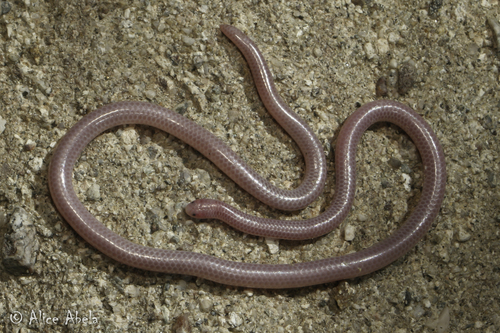
Western Threadsnake
The elusive Rena humilis, or Western Threadsnake, is a master burrower of the arid Southwest. Its diminutive size and fossorial lifestyle make it a stealthy predator of ants and termites, playing a crucial role in its ecosystem by controlling insect populations.
Brown, Purple, Silver, Pink
Color
Low
Aggression
Least Concern
Conservation Status
Stable
Population Trend
Characteristics
Rena humilis, commonly known as the Western Threadsnake, is a small, slender snake found in the southwestern United States and northwestern Mexico. It inhabits arid and semi-arid regions, often burrowing in loose soil or under rocks. This species is fossorial, meaning it is adapted for digging, and primarily feeds on ants and termites.
Distribution Range of the Western Threadsnake
Rena humilis, commonly known as the Western Blind Snake, is native to the southwestern United States and northern Mexico. In the United States, it is typically found in states such as California, Arizona, Nevada, New Mexico, and Texas. In Mexico, its distribution includes northern regions such as Sonora and Chihuahua.
Western Threadsnake's Habitat
Environmental Conditions
Rena humilis inhabits arid and semi-arid regions, often found in deserts, scrublands, and rocky hillsides. These snakes prefer loose, sandy, or loamy soils that facilitate their burrowing lifestyle. The climate in these areas is characterized by hot, dry summers and mild winters, with low annual precipitation.
Ecological Niche
As a fossorial species, Rena humilis primarily occupies the subterranean niche, where it spends most of its life underground. This adaptation helps it avoid extreme surface temperatures and predators. Its diet mainly consists of ants, termites, and other small invertebrates.
Copyright @ Nature Style Limited. All Rights Reserved.
 English
English